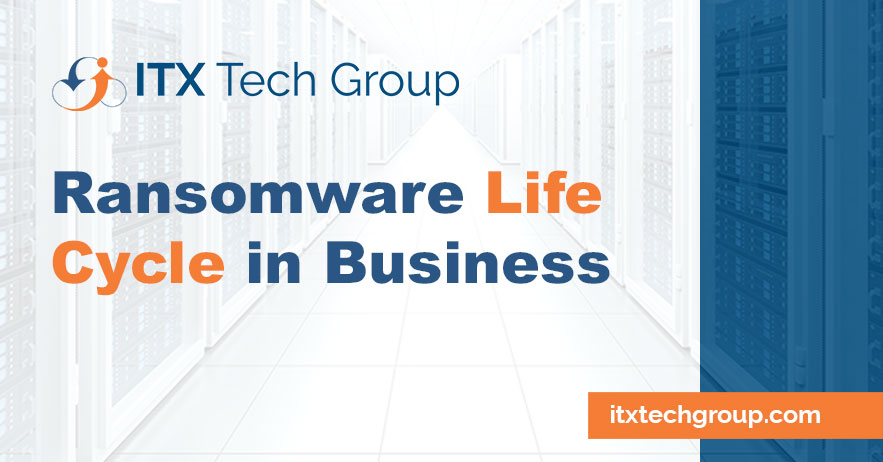Ransomware sucks, and its designed to encrypt data and demand payment for its release, and follows a systematic life cycle.
In this article, we’ll trace the stages of the ransomware life cycle to provide businesses with insights into the threat landscape and equip them with knowledge to bolster their cybersecurity measures.
Infiltration: The Gateway to the Network
The life cycle begins with the infiltration of the ransomware into the business network.
Cybercriminals use various vectors to breach defenses, including phishing emails, malicious attachments, compromised websites, and exploiting vulnerabilities in outdated software.
Once inside, the malware begins its insidious journey, seeking to exploit weaknesses in the network’s defenses.
Execution: Unleashing the Malicious Payload
Upon successful infiltration, the ransomware executes its malicious payload. This often involves the encryption of files and systems, rendering them inaccessible to the rightful users.
The goal is to cripple business operations and create a sense of urgency for the victim to comply with the ransom demand.
Encryption: Holding Data Hostage
The encryption phase is the core of the ransomware attack. The malicious software encrypts files using a strong cryptographic algorithm, making them unreadable without the decryption key.
Cybercriminals then present the victim with a ransom demand, typically demanding payment in cryptocurrency in exchange for the decryption key.
Ransom Note: Introducing the Extortion Element
Once data is encrypted, ransomware typically delivers a ransom note to the victim. This message informs the victim of the attack, outlines the ransom amount, and provides instructions on how to make the payment.
Ransom notes may be delivered through various means, including pop-up windows, text files, or even changes to the desktop wallpaper.
Payment: The Dilemma for Businesses
Facing the potential loss of critical data, businesses are confronted with a difficult decision—whether to pay the ransom or not. Paying the ransom does not guarantee the safe recovery of files, and it fuels the cybercriminal ecosystem.
Many cybersecurity experts advise against paying ransoms and instead recommend focusing on recovery strategies.
Propagation: Lateral Movement within the Network
While the initial infection may be localized, sophisticated ransomware strains often aim to propagate laterally within the network. This lateral movement increases the impact of the attack by infecting more systems and encrypting additional data.
Network segmentation and detection mechanisms are crucial in limiting the spread of ransomware.
Persistence: Evading Detection and Removal
To maximize the chances of receiving payment, ransomware strives to persist within the compromised network. This involves evading detection by security tools and establishing persistence mechanisms to survive system reboots.
Cybercriminals may deploy tactics such as polymorphic malware, making it challenging for traditional antivirus solutions to identify and eradicate the threat.
Exfiltration: The Threat of Data Theft
Some advanced ransomware strains incorporate data exfiltration into their life cycle. In addition to encrypting files, these strains may steal sensitive data before encryption.
Cybercriminals then use the threat of releasing or selling the stolen data as an additional lever to pressure victims into paying the ransom.
Post-Attack: Recovery and Reflection
After the attack, businesses enter the post-attack phase. This involves initiating recovery processes, restoring data from backups, and conducting a thorough analysis of the incident.
Post-attack measures also include strengthening cybersecurity defenses, addressing vulnerabilities, and implementing lessons learned to enhance resilience against future threats.
Conclusion
Understanding the life cycle of ransomware is instrumental in developing effective defenses against this pervasive threat.
Businesses must adopt a multi-layered cybersecurity strategy, including employee training, regular backups, network segmentation, and advanced threat detection mechanisms.
By tracing the life cycle of ransomware, businesses can equip themselves to proactively thwart attacks, minimize damage, and build resilience in an ever-evolving cybersecurity landscape.
ITX Tech Group has been serving small, medium, and large scale businesses with their IT support and cybersecurity needs all over the United States since 2011, so we’re confident we can provide you with affordable, professional IT solutions for years to come!
Connect with us for a free consultation to discuss your business technology needs.

